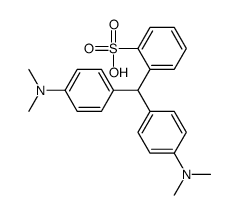Residual laminin-binding activity and enhanced dystroglycan glycosylation by LARGE in novel model mice to dystroglycanopathy.
Motoi Kanagawa, Akemi Nishimoto, Tomohiro Chiyonobu, Satoshi Takeda, Yuko Miyagoe-Suzuki, Fan Wang, Nobuhiro Fujikake, Mariko Taniguchi, Zhongpeng Lu, Masaji Tachikawa, Yoshitaka Nagai, Fumi Tashiro, Jun-Ichi Miyazaki, Youichi Tajima, Shin'ichi Takeda, Tamao Endo, Kazuhiro Kobayashi, Kevin P Campbell, Tatsushi Toda
文献索引:Hum. Mol. Genet. 18 , 621-31, (2009)
全文:HTML全文
摘要
Hypoglycosylation and reduced laminin-binding activity of alpha-dystroglycan are common characteristics of dystroglycanopathy, which is a group of congenital and limb-girdle muscular dystrophies. Fukuyama-type congenital muscular dystrophy (FCMD), caused by a mutation in the fukutin gene, is a severe form of dystroglycanopathy. A retrotransposal insertion in fukutin is seen in almost all cases of FCMD. To better understand the molecular pathogenesis of dystroglycanopathies and to explore therapeutic strategies, we generated knock-in mice carrying the retrotransposal insertion in the mouse fukutin ortholog. Knock-in mice exhibited hypoglycosylated alpha-dystroglycan; however, no signs of muscular dystrophy were observed. More sensitive methods detected minor levels of intact alpha-dystroglycan, and solid-phase assays determined laminin binding levels to be approximately 50% of normal. In contrast, intact alpha-dystroglycan is undetectable in the dystrophic Large(myd) mouse, and laminin-binding activity is markedly reduced. These data indicate that a small amount of intact alpha-dystroglycan is sufficient to maintain muscle cell integrity in knock-in mice, suggesting that the treatment of dystroglycanopathies might not require the full recovery of glycosylation. To examine whether glycosylation defects can be restored in vivo, we performed mouse gene transfer experiments. Transfer of fukutin into knock-in mice restored glycosylation of alpha-dystroglycan. In addition, transfer of LARGE produced laminin-binding forms of alpha-dystroglycan in both knock-in mice and the POMGnT1 mutant mouse, which is another model of dystroglycanopathy. Overall, these data suggest that even partial restoration of alpha-dystroglycan glycosylation and laminin-binding activity by replacing or augmenting glycosylation-related genes might effectively deter dystroglycanopathy progression and thus provide therapeutic benefits.
相关化合物
| 结构式 | 名称/CAS号 | 分子式 | 全部文献 |
|---|---|---|---|
 |
白贝林蓝 I
CAS:52748-86-4 |
C23H26N2O3S |
|
Biofilm-grown Burkholderia cepacia complex cells survive ant...
2013-01-01 [PLoS ONE 8(3) , e58943, (2013)] |
|
Lunatic, Manic, and Radical Fringe Each Promote T and B Cell...
2016-01-01 [J. Immunol. 196 , 232-43, (2015)] |
|
Sarcospan Regulates Cardiac Isoproterenol Response and Preve...
2015-12-01 [J. Am. Heart Assoc. 4 , (2015)] |
|
Constraints on superoxide mediated formation of manganese ox...
2013-01-01 [Front. Microbiol. 4 , 262, (2013)] |
|
Cooperation of MICAL-L1, syndapin2, and phosphatidic acid in...
2013-06-01 [Mol. Biol. Cell 24 , 1776-90, S1-15, (2013)] |